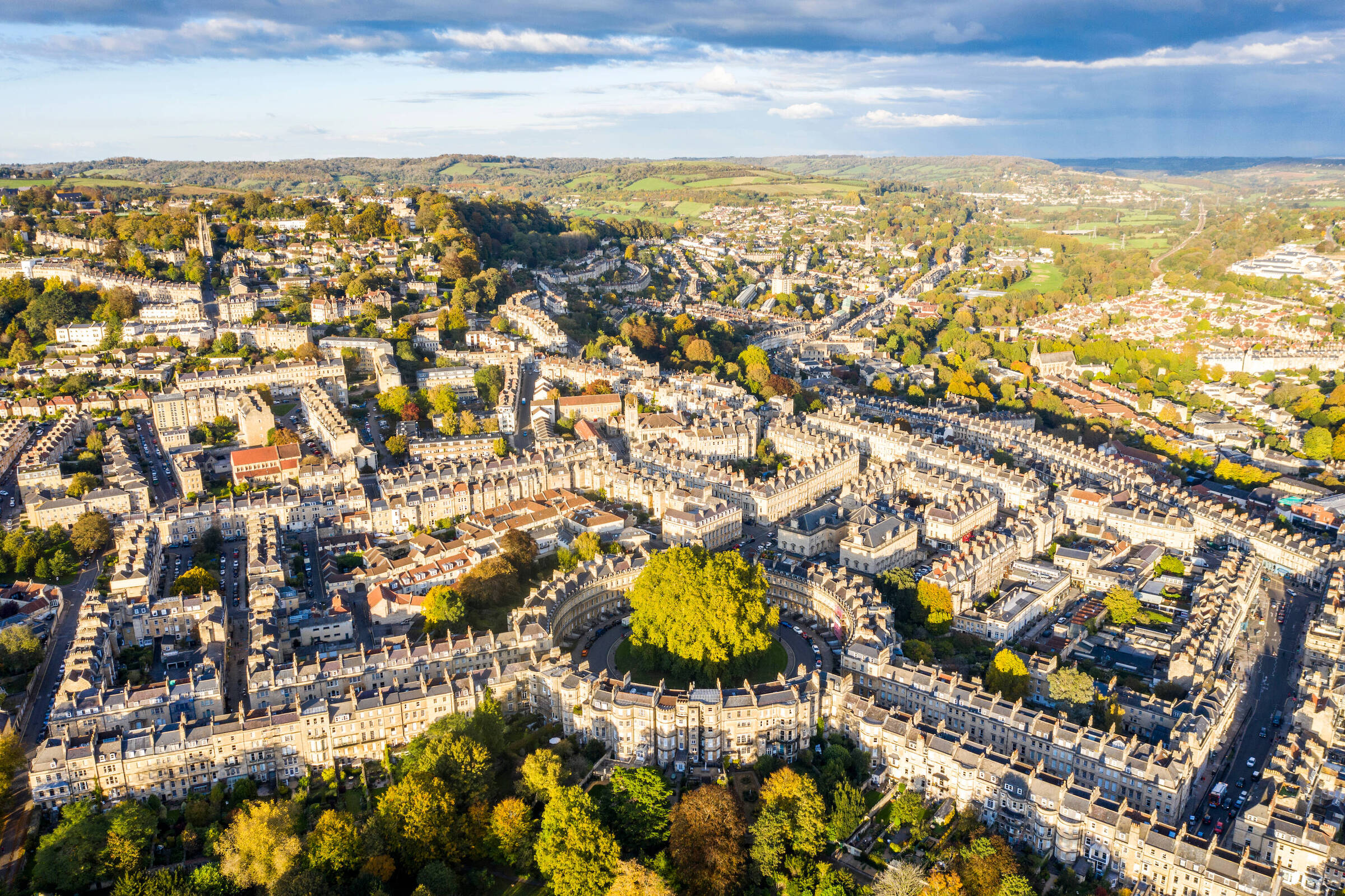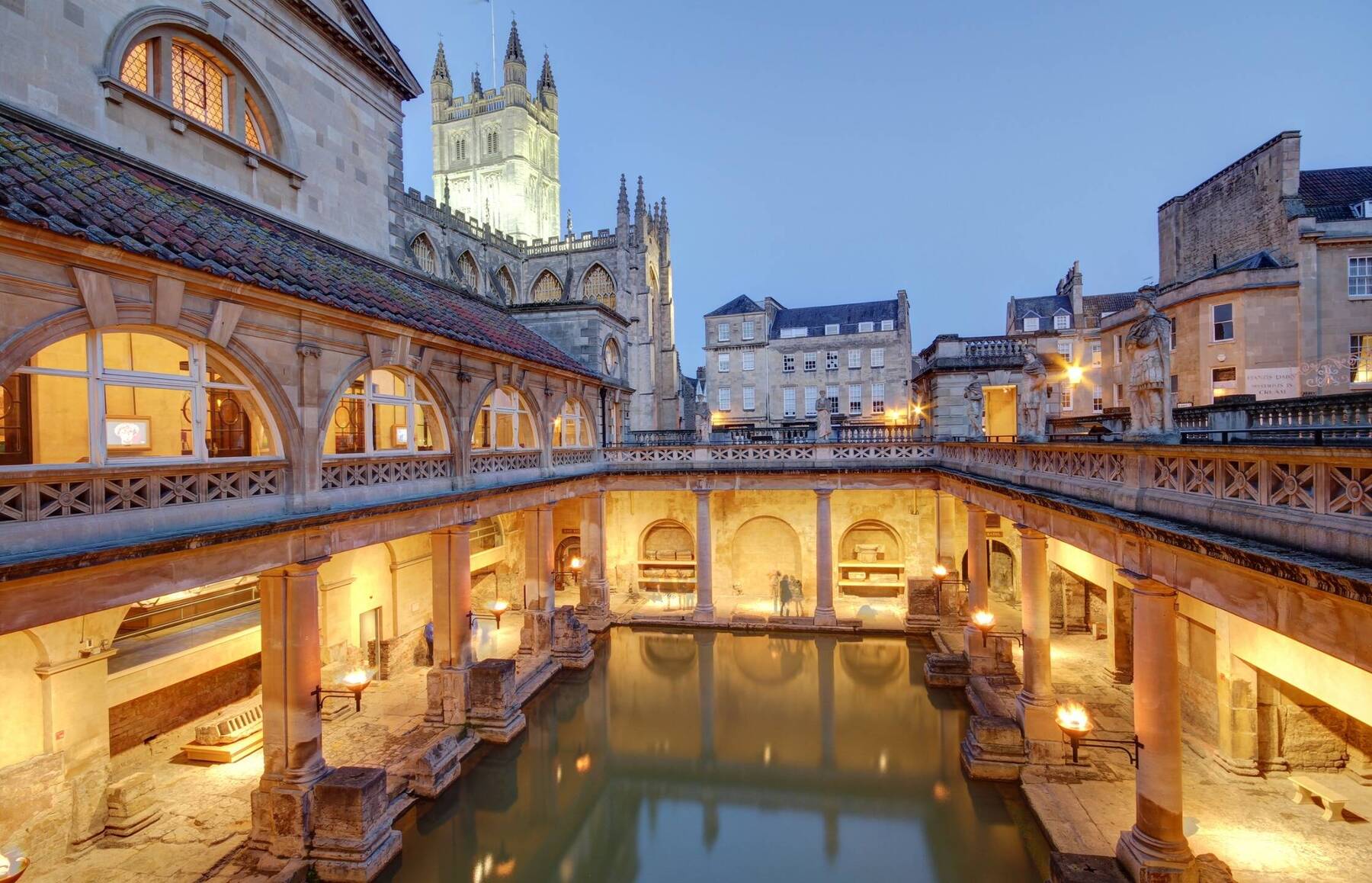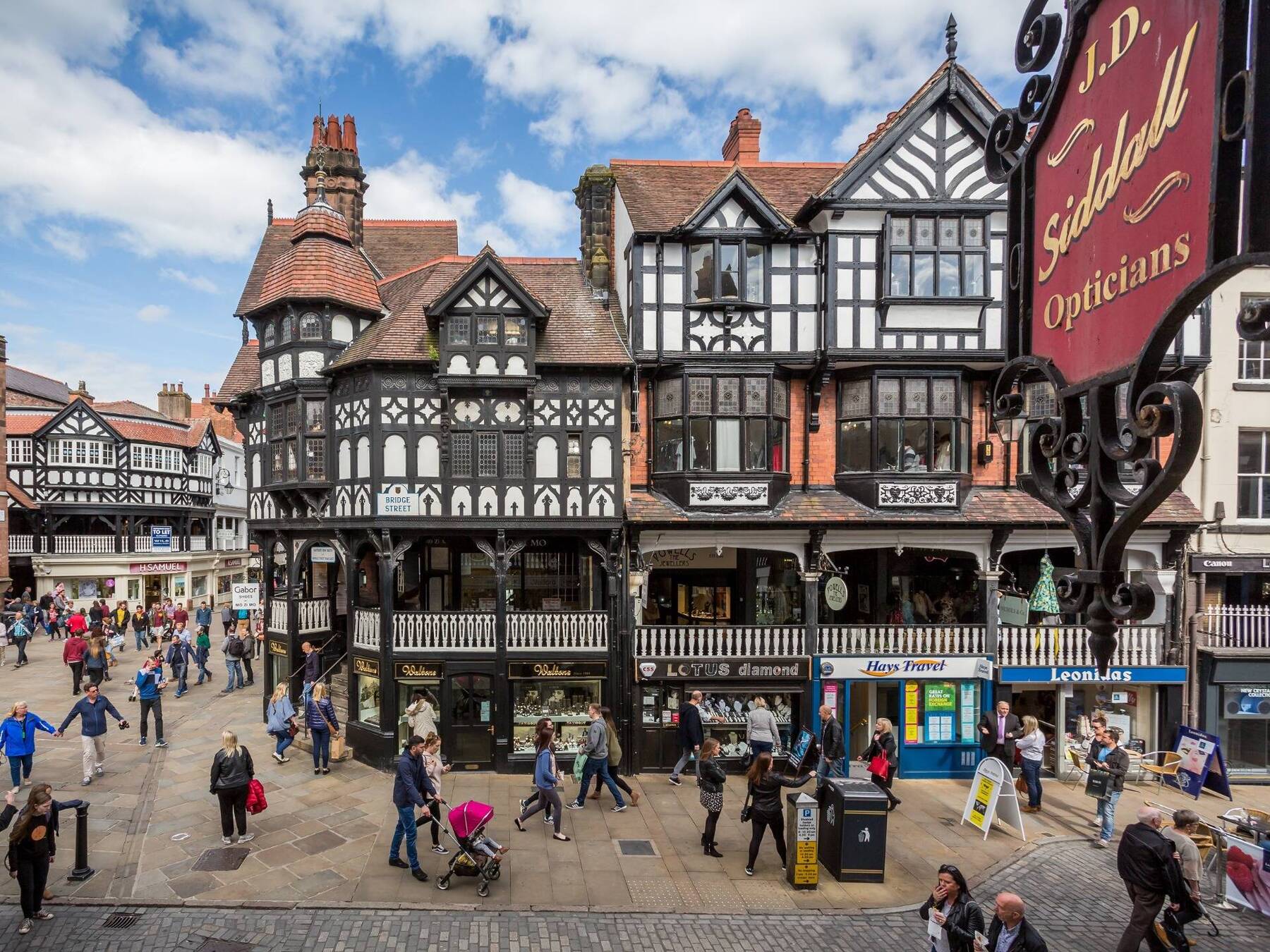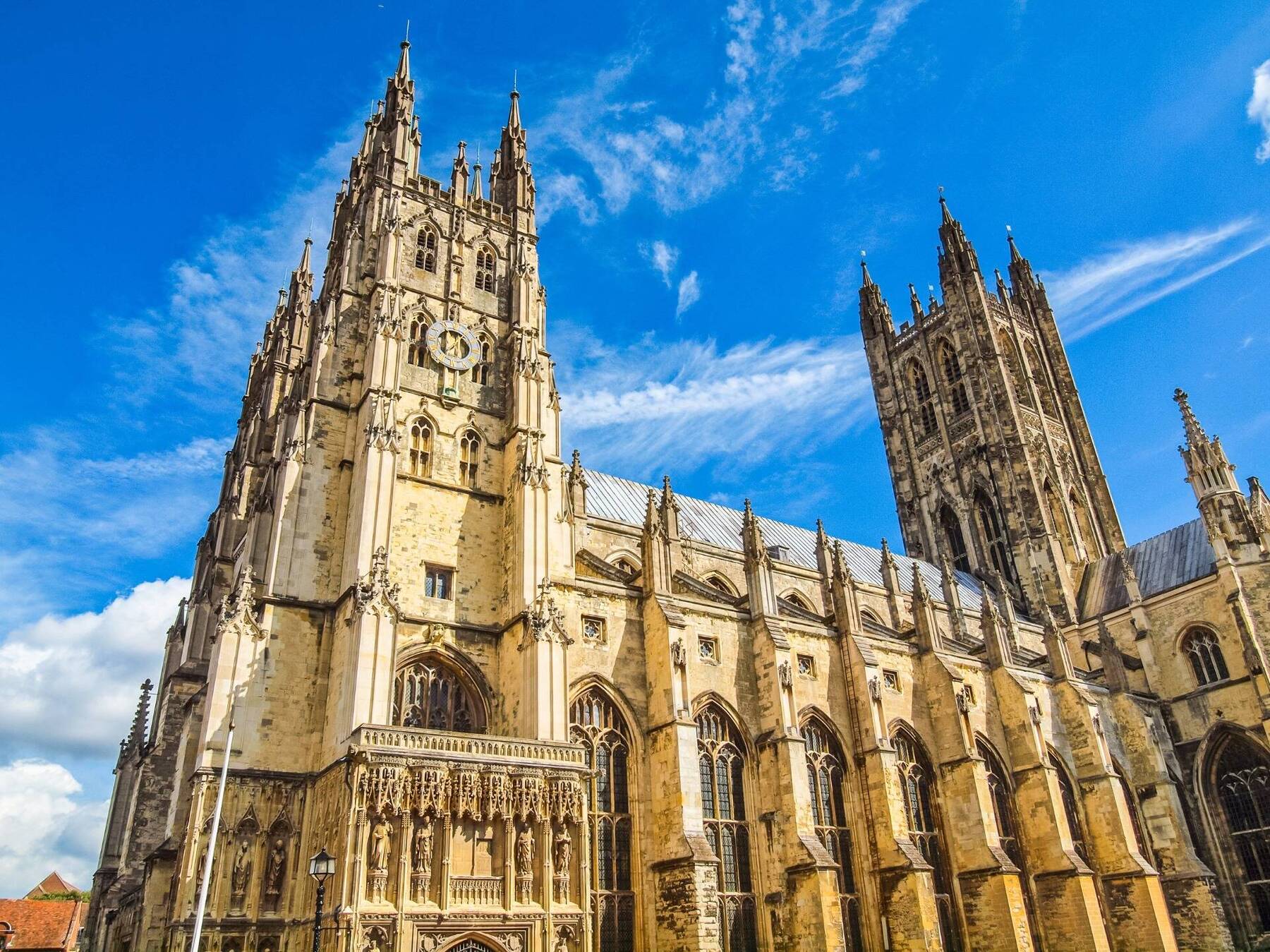Soaking up the culture in Bath
This charming city in the south-western county of Somerset has been known as a hub of recreation for over 2,000 years. Bath is home to one of the UK’s few natural thermal springs, which was built on by the Romans in the 1st century after their invasion of Britain. The hot mineral water that seeped through the limestone was fed through lead pipes into lavish stone chambers and plunge pools designed for bathing and socialising. The Roman Baths are well preserved today and remain a popular tourist attraction in the city, due to open again in accordance with government advice.
Elsewhere in the city, visitors will find stunning Georgian architecture constructed in the 18th century, designed with the ambition to make Bath one of the most beautiful cities in Europe. The neoclassical style of buildings such as the Pump Room and Assembly Rooms are in total harmony with the grandeur of Queen Square and Royal Crescent. The intricate medieval design of Bath Abbey is also worth a look - most of the city is an Instagrammer’s utopia.
Being a centre of leisure, there are more than a few wining and dining options scattered across the city. Classic flavours meet contemporary techniques at Michelin star-winning Olive Tree, while Clayton’s Kitchen blends elegance with simplicity to create their gorgeous Mediterranean and modern French-inspired menu. Visitors can also make a sophisticated stop at Green Park Brasserie for free live jazz or see a show at Theatre Royal Bath, another striking example of authentic Georgian architecture.






















Comments